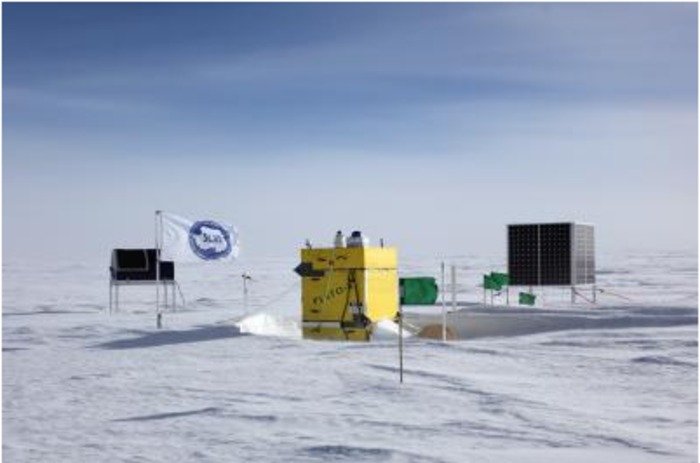A UNSW-led team has used a telescope in Antarctica to identify a giant gas cloud in our galaxy which appears to be in an early stage of formation. The HEAT telescope is the black object on stilts at left, the instrument module is the yellow box and the solar panel array is on the right. Credit: Geoff Sims
SYDNEY, Feb. 20 (UPI) -- A remote, autonomous telescope in Antarctica has revealed a distant giant gas cloud where stars may eventually be born, Australian astronomers say.
A team led by researchers from the University of South Wales is using the High Elevation Antarctic Terahertz telescope, or Heat, to map the location of giant clouds of molecular gas, the most massive objects in our galaxy that serve as the birthplaces of stars.
"This newly discovered gas cloud is shaped like a very long filament, about 200 light years in extent and 10 light years across, with a mass about 50,000 times that of our sun," UNSW astronomer and team leader Michael Burton said.
"The evidence suggests it is in the early stages of formation, before any stars have turned on."
The Heat telescope is on a 13,000-foot summit known as Ridge A, one of the coldest places on the planet and the driest, with the lack of water vapor in the atmosphere allowing terahertz radiation from space to reach the ground and be detected.
"We now have an autonomous telescope observing our galaxy from the middle of Antarctica and getting data, which is a stunning new way of doing science," Burton said. "Ridge A is more than 900 kilometers (560 miles) from the nearest people, who are at the South Pole, and is completely unattended for most of the year."
The discovery of the new galactic cloud about 15,000 light years from earth will help determine how these mysterious objects develop in the interstellar medium, the researchers said.















